Namibia is a unique and fascinating country. Attractions in Namibia range from prime wildlife safaris to fascinating desert landscapes, diverse culture and a whole lot of unpopulated places and wide open spaces in between.
The highlights of Namibia have taken millennia to reach their present state. Nowhere is the age of the earth more evident than in the ancient landscape of the world's oldest desert - The Namib Desert and of course the famous Sossusvlei. In Namibia, the layers of time are clearly marked and preserved: a dinosaur's footprints fossilised in rock; an ancient volcano worn by wind to its core; a 20,000-year-old meteorite; rock paintings over 26,000 years old; a river canyon 300 million years in the making. It took 5 million years for the dunes in the Great Sand Sea to get to their present state and they are considered young. Their petrified counterparts are over 20 million years old.
Despite its parched reputation, Namibia is one of the best wildlife safari destinations in Africa. Etosha National Park is a phenomenon unto itself. With a vast saline desert as its eye it is surrounded by tear ducts of natural springs that support an astonishing array of indigenous species. The Waterberg Plateau, Damaraland, Kalahari and Caprivi add fascinating and widely contrasting wildlife dimensions to complete the game viewing experience.
The people who inhabit this land, few though they may be, are no less captivating than their surrounds. San hunter-gatherers continue their ancient traditions in the area known as Bushmanland ; the Himba are nomadic herdsman with proud traditions who live in the remote and rugged Kaokoland and along the Kunene River. Coastal towns bear witness to the changing fortunes of an inhospitable shoreline. The ghost of a diamond-rush era remains in Luderitz; Swakopmund thrives despite its precarious location and shipwrecks along the Skeleton Coast reveal the source of its grisly name.
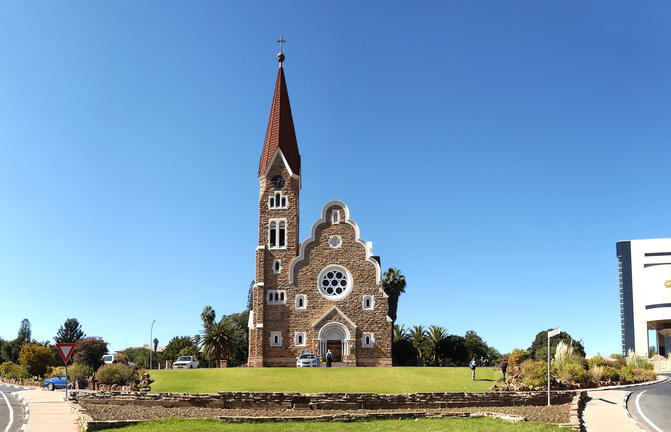
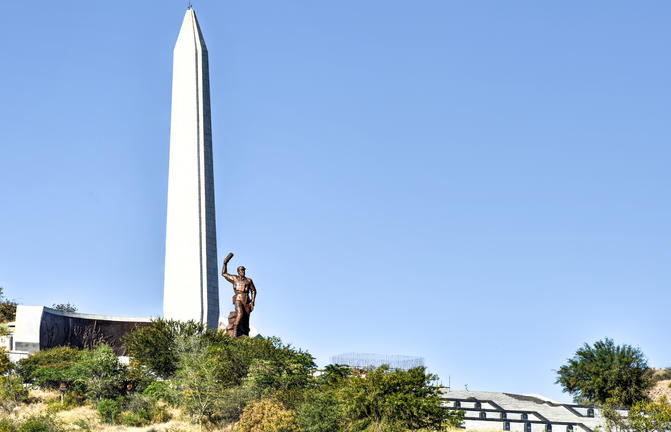


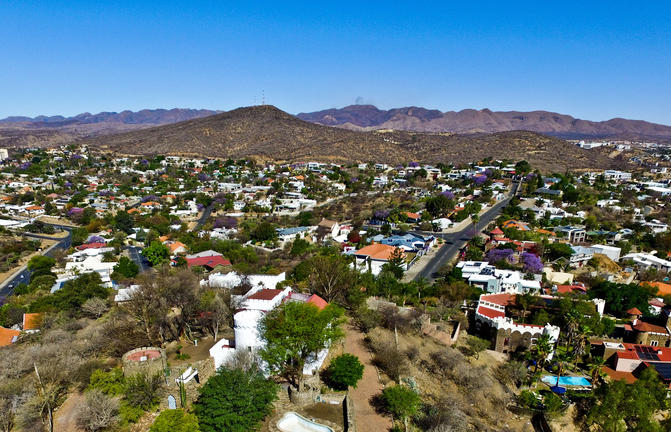
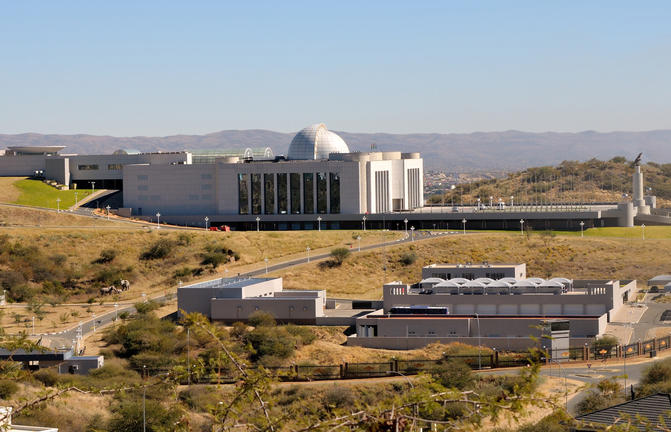
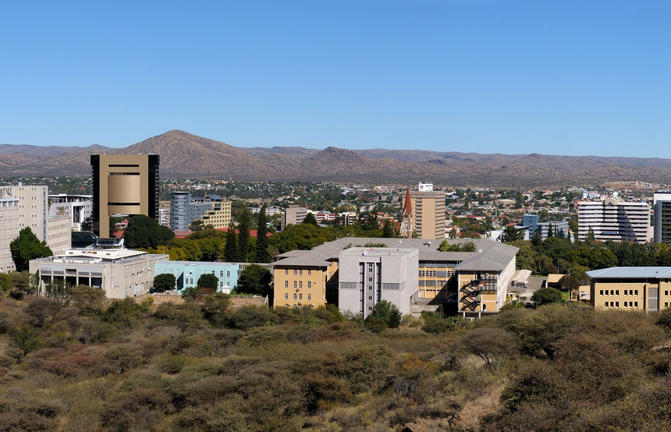
Surrounded by the stubble-covered Auas Mountains and the endless Khomas Hochland, Windhoek lies in a long valley fed by ancient hot springs in the central highlands. Namibia’s capital and bustling city. More often than not, the start or end place of your Namibia safari.
In Windhoek there are many interesting historical buildings, museums, galleries and craft shops. The city has several good restaurants and modern shops and services making it an excellent base camp from which to launch your Namibian adventure.
Star dunes with up to five crests rise 300m into the air and rank among the biggest in the world; the dune valleys are marked by vast clay pans where the Tsauchab River gave up its fight to reach the sea more than 60,000 years ago.
Besides the dunes and pans of Sossusvlei and Sesriem Canyon, a sideshow of activities and sights has developed around the region and there are plenty of game lodges that provide additional desert-adapted activities. Plants and birds are the dominant life form in this dessicated realm and they support a tiny world of mammals, reptiles and insects that, in the absence of coastal fog, seldom wander far from the rivercourse and its pans.



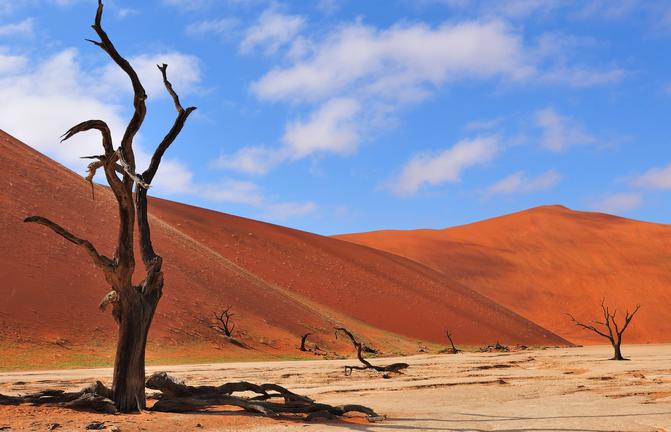
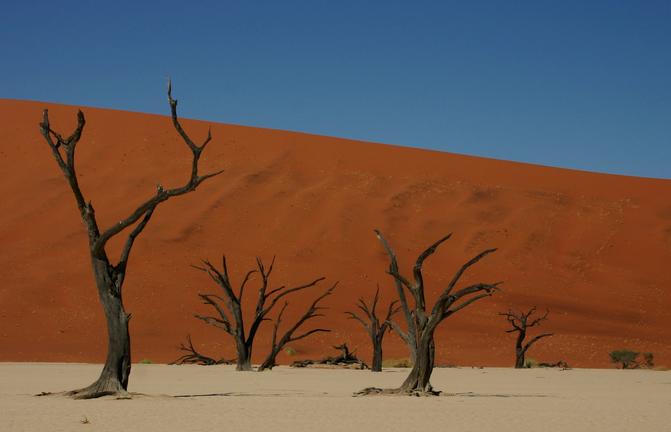

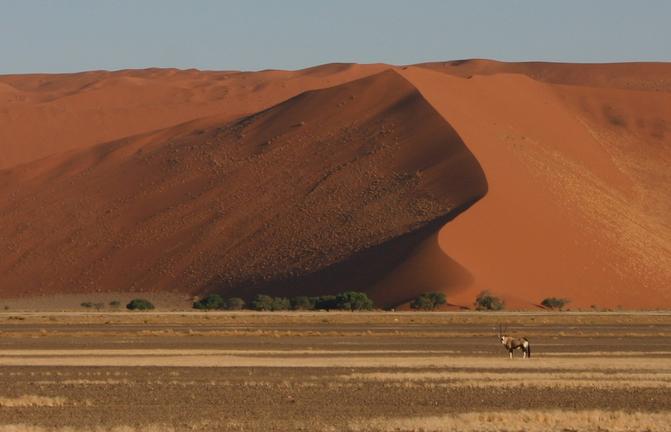

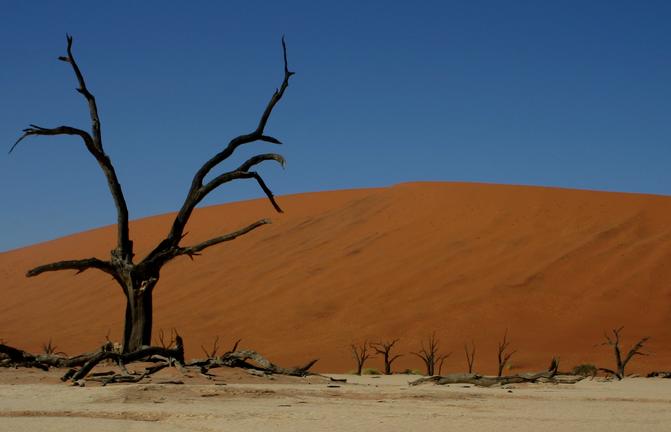










Walvis Bay is an industrial port which lies along the Atlantic Ocean, off Namibia's Skeleton Coast. The large bay and surrounding sand dunes help make Walvis Bay a tourist mecca with loads of activities on offer to explore it.
- Explore the Skeleton Coast where the dunes meet the sea at Sandwich Harbour
- Go on a dolphin boat cruise in the harbour. Enjoy champagne and oysters
- Kayak among the seals at Pelican Point
- Visit and climb the mighty Dune 7
- Visit the RAMSAR wetland birding site and the Walvis Bay Lagoon. Thousands of flamingos from October to April
- Explore the neighbouring town of Swakopmund. Activities abound and dining delights
Surrounded by the ancient Namib Desert and the inhospitable - but bounteous - Atlantic Ocean, Swakopmund is alive with activity and has a lot on offer for the adventure-seeker: quad-biking, sand-boarding, horse-riding, skydiving and more.
Swakopmund has many interesting German-influenced buildings from the early 1900s in a variety of styles and, for its size, Swakopmund has an astonishing array of restaurants that serve mainly seafood, steak and many German staples.




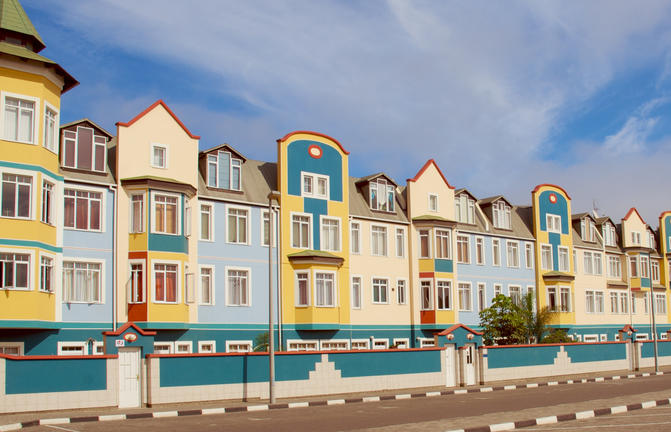
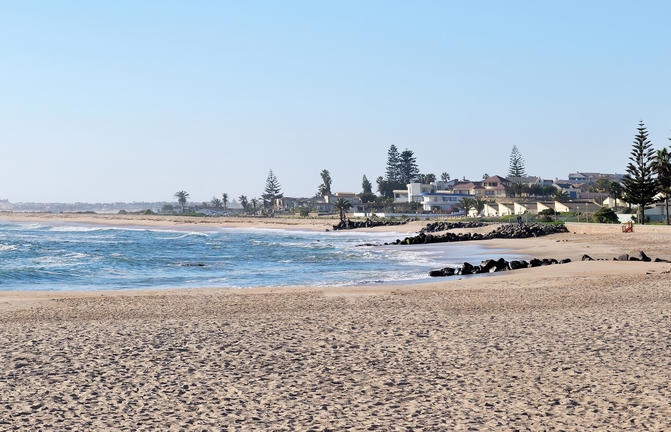
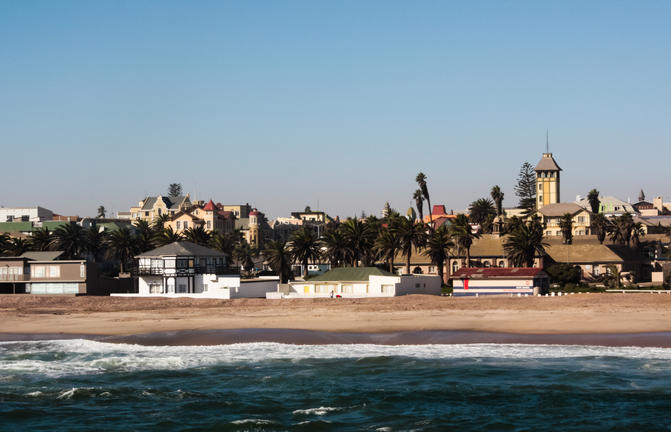
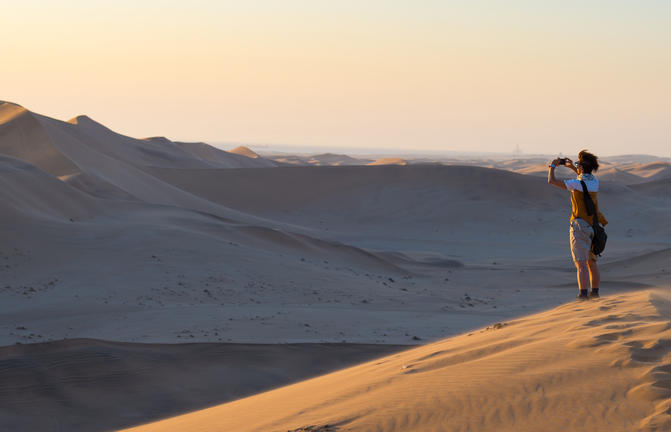
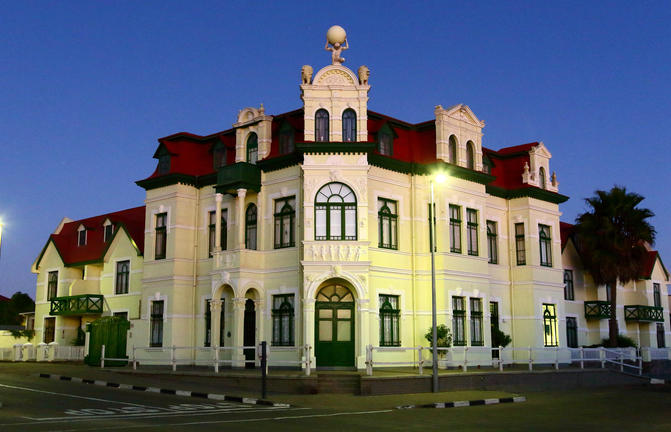
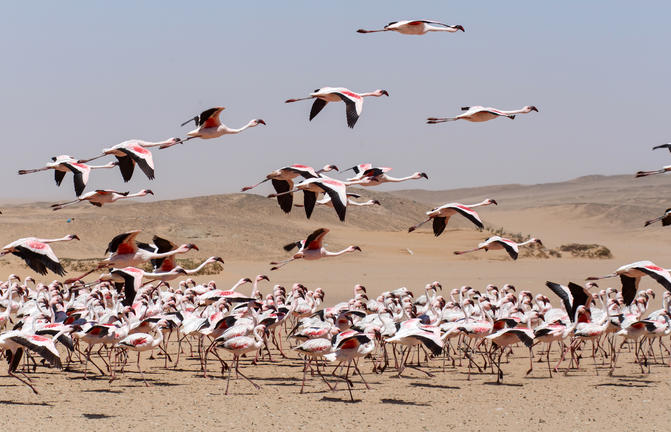
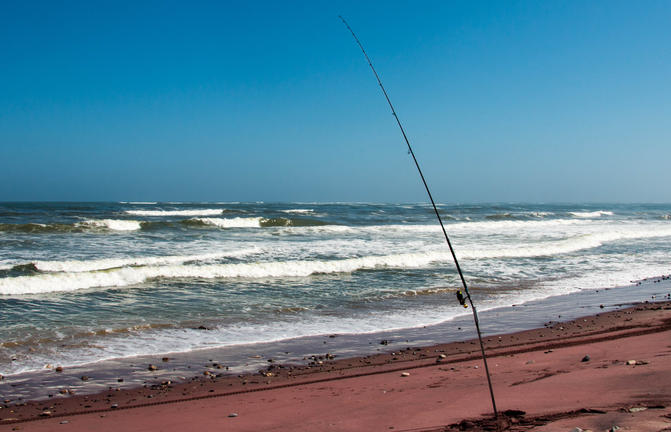
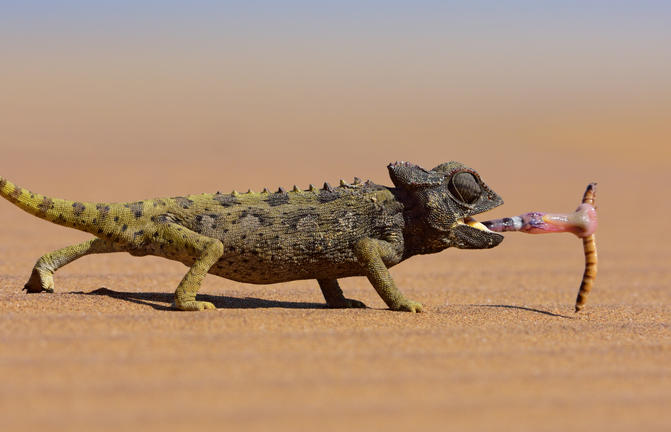





Situated in Namibia’s desolate, awe-inspiring Namib Desert, between Usakos and Swakopmund and about two hours’ drive from Swakopmund, the Spitzkoppe are a group of bald granite peaks forming one of Namibia’s most recognizable and dramatic landmarks. These enormous towering domes are a mecca for hikers and mountaineers, from beginners interested in guided historic walks to professional climbers seeking an adrenaline boost. Numerous ancient rock paintings can be visited as part of a guided walking tour. The extreme, barren landscapes and striking rock formations create an excellent setting for photography.
Famous for its wildlife, Etosha Park supports 114 species of mammal and over 340 species of bird. At the heart of the park is a 4,800 square kilometre salt pan surrounded by sparse shrubs and grassy plains, the perfect haven for animals.
As vegetation in most areas is sparse, the animals have learnt to drink during the day when predators are inactive and it is the safest time to be out in the open. It is not uncommon to see up to 7 different species of game at any waterhole. Like everything in Namibia, the pan is ancient - 2 million years or so - and was formed when a great continental upheaval diverted the Kunene River towards the sea, leaving a massive inland lake that soon dried up. Usually a shimmering white horizon, the pan fills with water after a good rainy season and becomes a vast knee-deep lake.




















As previously described
This 22,000-hectare private nature reserve is surrounded by the the Omboroko Mountains and the home of The AfriCat Foundation. AfriCat works to assist with the long term conservation and rehabilitation of carnivores like cheetah, leopard, brown hyena and that African icon, lion. Since 1993, over 1,000 predators have been saved with 86% released. Here you can see cheetah, wild dog and hyena in their natural home - leopards are radio tracked so you could get lucky and spot them too. 250 bird species think it’s an ideal spot and there’s a hide for watching nocturnal animals.












